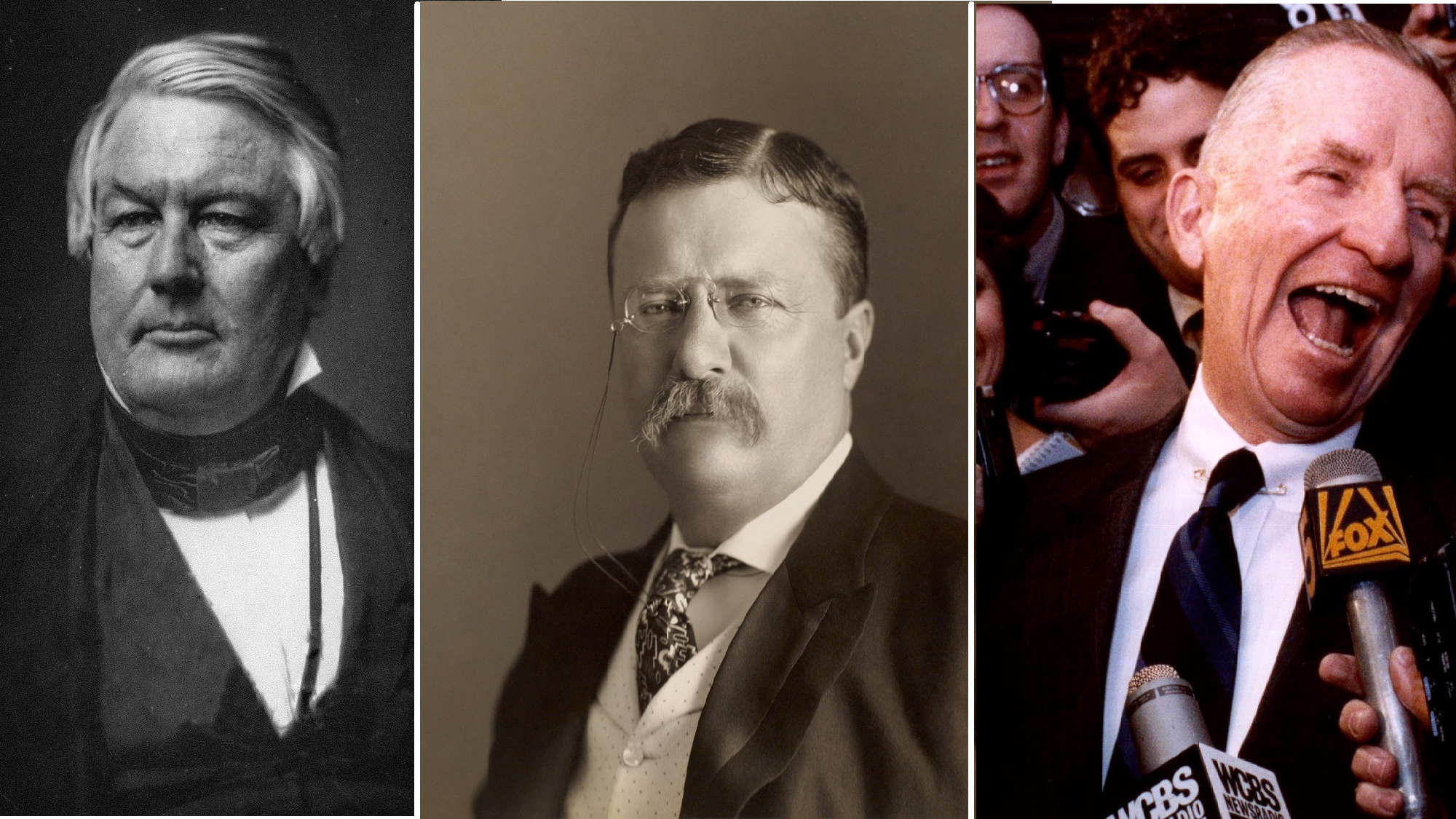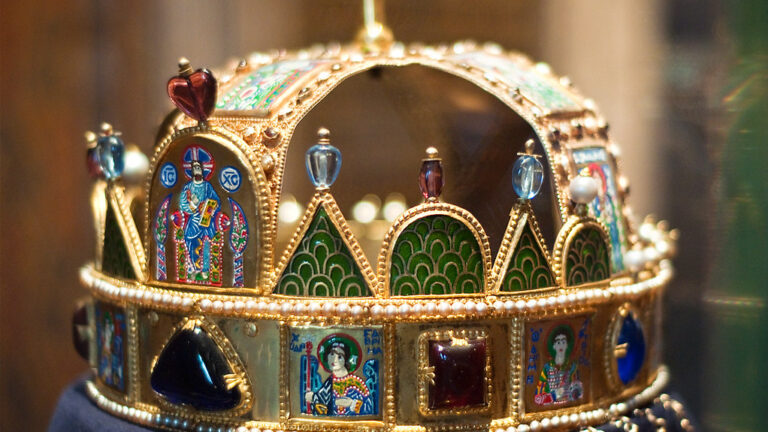Currently, we are watching the sequel to the Elon Musk–Donald Trump feud. After a blowup and quick make-up in May, Musk is blowing a gasket on his own social media platform X again over President Trump’s One Big Beautiful Bill. And, just like a month and a half ago, he is threatening to create a party of his own.
We now also know the tentative name of that party: the America Party. There has actually been a party with a very similar name in American history before, the American Party in the 1850s. This gave us the inspiration to go through the most successful third parties in US presidential elections, since the two major groups, the Democrats and Republicans, started competing with each other for power—that means from the 1856 election onward.
Elon Musk on X (formerly Twitter): “If this insane spending bill passes, the America Party will be formed the next day. Our country needs an alternative to the Democrat-Republican uniparty so that the people actually have a VOICE. / X”
If this insane spending bill passes, the America Party will be formed the next day. Our country needs an alternative to the Democrat-Republican uniparty so that the people actually have a VOICE.
In recent years, there have been a few parties that were accused of being ‘spoilers’, meaning they got just enough votes to tilt the election to the eventual winner. Namely, these were Ralph Nader’s independent campaign in 2000 and Jill Stein’s Green Party in 2016. However, it has been a while since a party outside of the two big ones drew significant national support.
But for now, let’s start with 1856.
The American Party aka Know Nothings
The American Party was founded under the name Native American Party in 1844. They were not a special interest group for Indigenous people, as one reading their name today may think—rather, they were an anti-immigrant party that formed in response to the heightened Irish migration into the US due to the Irish potato famine of the 1840s.
They had a special gripe with the Catholicism of the new Irish immigrants. They believed in the so-called ‘Romanist conspiracy’ which purported that the Catholic Church was actively trying to undermine social order in the United States, to ultimately bring the country under the control of the Pope.
In 1855, they shortened their name to the American Party. However, they have always been better known by their colloquial name ‘Know Nothings’, or ‘Know Nothing Party’, since their followers were instructed to answer ‘I know nothing’ whenever they were questioned by outsiders about the party—not the greatest strategy to win over voters…
However, in 1856, they nominated former Whig President Millard Fillmore for the presidential election. Fillmore was only informed about his nomination after it happened; he did not seek it himself but eventually accepted it. Thus, in the 1856 presidential election, the American Party, with President Fillmore at the top of their ticket, won 21.5 per cent of the popular vote and eight electoral votes—all from the state of Maryland.
The Liberal Republican Party
By the time President Ulysses S Grant was up for re-election in 1872, many within his own party were dissatisfied with him. Despite being a Civil War hero for the Union, people were disturbed by the corruption scandals within his administration, most notably, the Crédit Mobilier scandal, where railroad construction companies were overpaid for their work by government officials in exchange for bribes.
The Republican editor-in-chief of the New-York Tribune, Horace Greeley, decided to run against Grant in the 1872 presidential election in an effort to reform his own party. The Democrats ultimately chose not to nominate a candidate and instead supported Greeley, believing this gave them a better chance of unseating Grant. This was still an unusual choice, given that Greeley was more progressive on civil rights and anti-slavery issues than Grant, while the Democratic base in the South remained largely resistant to those ideas.
So, the ruse did not work: Grant was comfortably re-elected with 286 electoral votes out of the 352 total at the time. Greeley ended up getting none, but that was because he passed away in the time between the election and the meeting of the Electoral College. Thus, the electors he won cast their votes freely to whomever they wished—this would have been a much messier situation if Greeley had actually won…
The People’s Party aka Populist Party
The People’s Party, another group that is better known by their colloquial name ‘the Populists’, was founded in 1892. They could effectively be described as a farmers’ interest party based in the Western states of the United States at the time. Their major platform issue was the free silver movement. They supported artificially inflating the US currency by minting silver coins, and giving them to farmers as loans. Their base gave rise to William Jennings Bryan, an influential politician who ran for President three times as a Democrat but never won.
In the 1892 presidential election, the Populists won 8.2 per cent of the popular vote and 22 electoral votes. Former Iowa Congressman James B Weaver was their nominee.
The Progressive Party aka Bull Moose Party
This is the closest to what Elon Musk is currently threatening to do to Republicans. In 1908, the highly popular President Theodore Roosevelt hand-selected his successor, his Secretary of War William Howard Taft. President Roosevelt looked to him to follow up on his ‘Square Deal’ agenda, which, in essence, consisted of going after big trusts (or, rather, ‘bad trusts’, as Roosevelt called them), putting governmental consumer protections in place, and creating national parks to conserve the environment.
However, by 1912, he was really not pleased with how his rotund friend Taft was handling the business of the United States. Taft went after enterprises that Roosevelt saw as ‘good trusts’, namely, US steel. Also, President Taft fired Roosevelt’s old ally Gifford Pinchot as head of the US Forest Service.
When Theodore Roosevelt failed to get the Republican Party’s nomination at the convention, he went and started his own party, the Progressive Party to run for a third term in the 1912 election. He ended up splitting the Republican vote: the Progressives got 27.4 per cent of the popular vote and 88 electoral votes; while poor President Taft ended up having the worst showing for an incumbent president in US history, and just got 23.2 per cent of the popular vote and a mere 8 electoral votes. Democrat Woodrow Wilson ended up winning the election, with 41.8 per cent of the popular vote and a whopping 435 electoral votes.
To continue with the trend, the Progressive Party also ended up with a very catchy nickname for themselves, the Bull Moose Party. This came from a quip President Roosevelt made after being wounded by the bullet of an assassin at a campaign event in Wisconsin. The bullet was slowed down by his glasses case and a printed copy of his speech in his breast pocket. After being shot, he proclaimed: ‘It takes more than that to kill a bull moose,’ referring to himself.
States' Rights Democratic Party aka Dixiecrats
Looks like Musk better start thinking up a catchy nickname for his new party if he wants to win any electoral votes.
The States' Rights Democratic Party was founded in 1948 in protest of President Harry Truman's desegregation orders. Truman himself was a Democrat, but his vision of having black and white Americans fighting side by side with each other in the US military and working next to each other in the federal government again angered the old, traditional, white Democrat base in the South.
Because of the break-aways, every political analyst and journalist thought that Truman would lose his re-election bid in the 1948 presidential election: this is where the iconic photo of Truman holding up the premature front page headline 'Dewey Defeats Truman' by the Chicago Daily Tribune comes from. Republican nominee Thomas Dewy in fact did not defeat Truman, who managed to win despite opposition from his own party.
The Democrats got 49.6 per cent of the popular vote and 303 electoral votes, the GOP got 45.1 per cent of the popular vote and 189 electoral votes, while the Dixiecrats, led by Senator Strom Thurmond of South Carolina, got 2.4 per cent of the popular vote and 39 electoral votes.
What the Dixicrats did give to US history is the modern Confederate flag. What is commonly referred to as the 'Confederate flag' today was never the official national flag of the Confederate States of America in the 1860s. Rather, it was the symbol of the States' Rights Democratic Party in 1948.
The American Independent Party
White Southern Democrats did not take kindly to civil rights reforms coming from their own party two decades later either. In response to what they saw as the ‘ultimate betrayal’—President Lyndon B Johnson, a fellow Southern Democrat, signing the Civil Rights Act of 1964 into law—the American Independent Party was founded in 1967.
In 1968, they nominated Alabama Governor Geroge Wallace for President, who infamously said ‘segregation now, segregation tomorrow, segregation forever’, in his inaugural address as governor in 1963. This pretty much sums up his 1968 platform for the AIP as well.
In the presidential election, Wallace reliably carried the deep South states, thus winning 13.5 per cent of the popular vote and 46 electoral votes. This was the last time a party apart from the Republicans and Democrats won any electoral votes. Republican Richard Nixon won that year, with 43.4 per cent of the popular vote and 301 electoral votes, beating out Democrat Hubert Humphrey with 42.7 per cent of the popular vote and 191 electoral votes.
'1968 was the last time a party apart from the Republicans and Democrats won any electoral votes'
The most surprising part of the story: the American Independent Party never officially dissolved, so technically they are still around. However, they hold no seats in Congress or any state legislatures.
The Reform Party
And thus, we get to 1996, when a Texas-based tech billonaire decided to run for President for concerns over the national debt—certainly the closest parallel we have to Elon Musk today.
However, back then, that billionaire was Ross Perot. He ran an independent campaign in 1992, and did surprisingly well despite dropping out in July then re-entering in October. He got 18.9 per cent of the popular vote but won no electoral vote.
Four years later, in 1996, he decided to run again, that time, with the organization of his new Reform Party behind him. He again focused his campaign messaging on the rising national debt, holding the big government accountable, his opposition to the new international NAFTA trade deal, and the corruption of the two-party system. In 1996, this amounted to getting 8.4 per cent of the popular vote, and winning no electoral vote again. Democrat Bill Clinton won a second term that year, with 49.2 per cent of the popular vote and 379 electoral votes, ahead of the GOP's Bob Dole, who got 40.7 per cent of the popular vote and 159 electoral votes.
Related articles:







